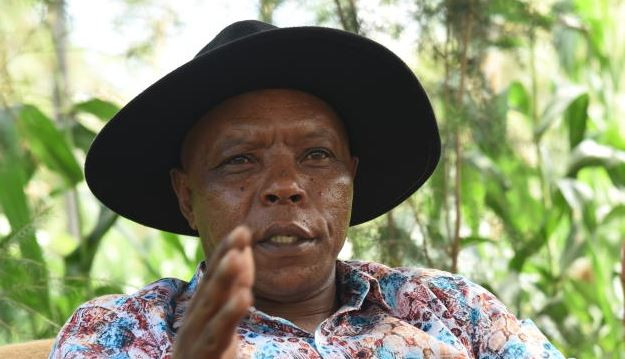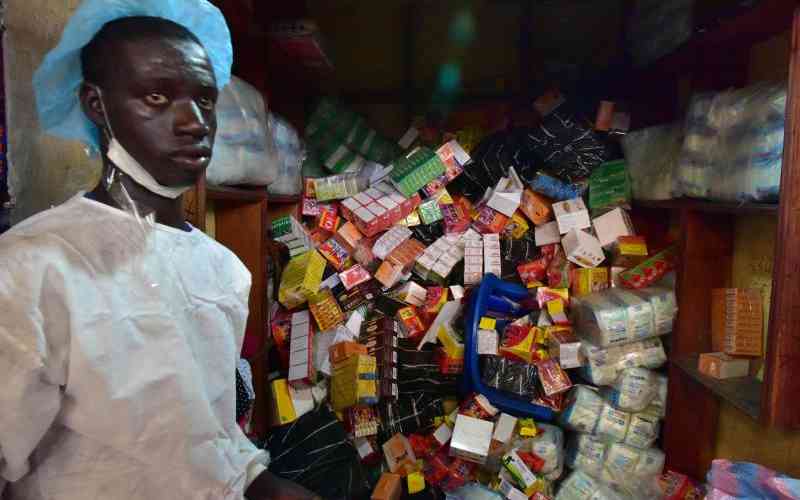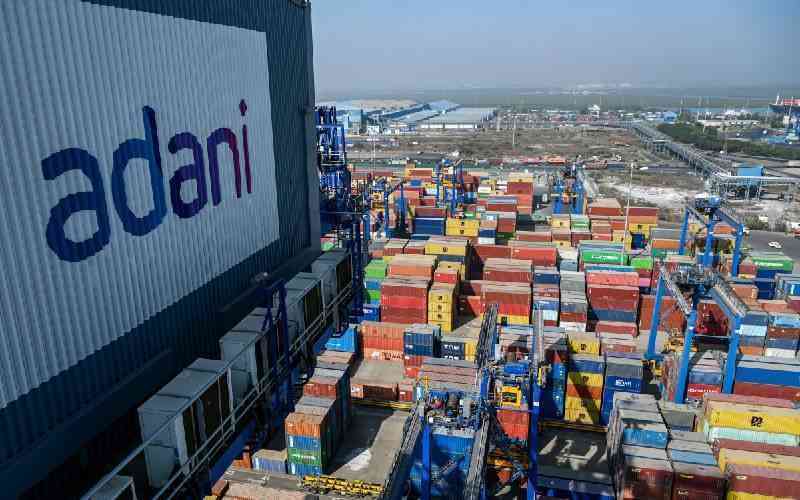Charles Ndegwa* walks into a Kenyan pharmacy shop to buy his blood pressure prescription medication. The particular brand his doctor prescribed is not available but there is an alternative one. It is manufactured locally but has the same molecule as the prescribed one.
Ndegwa declines the alternative, insisting that he needs the specific brand he has been using for years. He doesn’t trust the available alternatives.
This isn’t unique to Ndegwa. Many Kenyans on treatment for chronic illnesses are facing challenges occasioned by the Covid-19 pandemic.
According to the Pharmaceutical Society of Kenya(PSK), Kenyans are experiencing an artificial shortage of medicines because of a deep-seated perception they have had for a long time and loyalty to particular brands.
PSK faults Kenyans fixation on brand names instead of focusing on getting the active ingredient they need for their treatment.
“This is because of the marketing strategies by big pharmaceutical companies that makes doctors and patients loyal to a particular brand even when there is an equivalent option,” says Dr Daniella Munene, CEO of PSK.
She further states that Kenya is in fact not facing an absolute shortage but they might have limited options depending on the availability of the brands that made it into the country prior to, and now during the pandemic.
Dr Daniel Karuma of Goodlife Pharmacy concurs.
“Patients do not want an alternative brand because they think what you are giving them is inferior to what they are used to, and it might not work,” he says.
Generic and local brands, good options too,
Infact, for each drug molecule in Kenya, there are more than 100 generic brands by different manufacturers in the market. This means that Kenyans have a wide range of generic brands, most of which are still on the shelves.
When doctors write prescriptions by brand name, this creates an unhealthy perception by the patient that nothing else can work. A better way would be to write prescriptions using the name of the active ingredient.
PSK also urges doctors to explain to their patients the brands that are effective and affordable.
Local manufacturers supply almost 100 per cent of the public health sector needs, but have been unable to out-muscle the marketing strategies of big pharmaceutical industries that dominate the private health sector, where many people erroneously equate generics to inferior medicines.
“Because of low demand, our local manufacturers operate below capacity,” Dr Daniella adds.
Stay informed. Subscribe to our newsletter
What patients with chronic diseases should know
To increase the confidence of patients in alternative brands, the pharmaceutical technologists at the pharmacies should engage the primary physician who wrote the prescription when there is need to give an alternative brand.
“Good pharmacy shops will call the prescribing doctor to consult and let the patient know the options that they have, especially now with the coronavirus pandemic where patients are not in the city and do not have access to as many options,” explains Dr Eric Njenga, The Nairobi chair of the Kenya Association of Physicians.
Usually, cost of the medicines and the patient’s capability of sustaining the expense guides physicians when prescribing a drug.
“This is crucial especially in treatment of chronic diseases otherwise the patient will come back later with a complication like a stroke because they couldn’t afford the medicines that were prescribed,” he says.
Other important aspects considered include the drugs’ side effects or additional benefits on other conditions that could arise especially for people with diabetes and hypertension.
“We also have to think about the local options the patient can access, especially those in rural areas,” Dr Njenga adds.
How China affects drugs availability
The potential for a shortage was initially a matter of concern given that the epicentre of the coronavirus pandemic, Wuhan in Hubei Province in China, is coincidentally a pharmaceutical hub where active pharmaceutical ingredients (APIs) are manufactured.
Wuhan is reportedly home to 42 pharma contract manufacturing facilities.
Many other countries, including India and some in the Middle East, rely on manufacturers in Wuhan to supply them with the active pharmaceutical ingredients from which they manufacture the medicines bought off the shelves.
When the pandemic hit India, and movement restrictions were imposed, the Indian government focused on manufacturing for their own market first as they weighed the situation.
India and China are now easing restrictions and are able to export drugs.
Indian manufacturers however are currently operating at reduced capacity due to reliance on China for their active pharmaceutical ingredients. This directly affects local importers whose drug orders are not supplied in full or in time.
The increased cost of freight due to limited flights and the diminishing value of the Kenya shilling has pushed up the price of some medicines and APIs, a cost that is eventually transferred to the end user.
Local manufacturers have felt the effects of these increased costs almost immediately, in addition to the changes in the Tax Amendment Act, 2020.
“Medicines are best zero-rated, meaning they should not be taxed and suppliers can claim VAT refunds. This will prevent accumulation of input costs down the value chain. VAT exempt status is a deterrent in high capital investment, such as installation of new machinery and equipment, because all the VAT incurred shall not be refunded,” Dr Daniella explains.
While the local medicine manufacturers rely on China for their APIs, the big pharmaceutical companies have alternatives for their manufacturing processes. Some of these are in Europe and have not been affected as much as the generic drug manufacturers have been.
The big pharmaceutical companies also require their local distributors to have buffer stocks that can last for at least three to six months at any given time.
“This means that any gaps in supply will start being felt at the earliest in June,” Dr Daniella explains.
Recent price hikes
Despite all of these challenges, Dr Karuma says not all drugs have been affected -- some still cost the same while prices of others have slightly increased.
High cost of medicines will hurt people with chronic illnesses who would want to stock up due to the uncertainties of the pandemic.
Due to flight restrictions, prices of some brands of medicines might have increased while other drugs may not be available.
“During the initial stages of the pandemic, we had challenges because of lockdowns in places where the drugs are sourced and the logistics of shipping them here affected of our supplies,” Dr Karuma explains.
Notably, local manufacturers produce half of the medicines on the 2019 Kenya Essential Medicines List.
“Once China is fully open, we need to encourage Kenyans to consume locally manufactured medicines which in turn will boost the capacity of local manufacturers,” Dr Daniella says.
 The Standard Group Plc is a
multi-media organization with investments in media platforms spanning newspaper
print operations, television, radio broadcasting, digital and online services. The
Standard Group is recognized as a leading multi-media house in Kenya with a key
influence in matters of national and international interest.
The Standard Group Plc is a
multi-media organization with investments in media platforms spanning newspaper
print operations, television, radio broadcasting, digital and online services. The
Standard Group is recognized as a leading multi-media house in Kenya with a key
influence in matters of national and international interest.
 The Standard Group Plc is a
multi-media organization with investments in media platforms spanning newspaper
print operations, television, radio broadcasting, digital and online services. The
Standard Group is recognized as a leading multi-media house in Kenya with a key
influence in matters of national and international interest.
The Standard Group Plc is a
multi-media organization with investments in media platforms spanning newspaper
print operations, television, radio broadcasting, digital and online services. The
Standard Group is recognized as a leading multi-media house in Kenya with a key
influence in matters of national and international interest.








